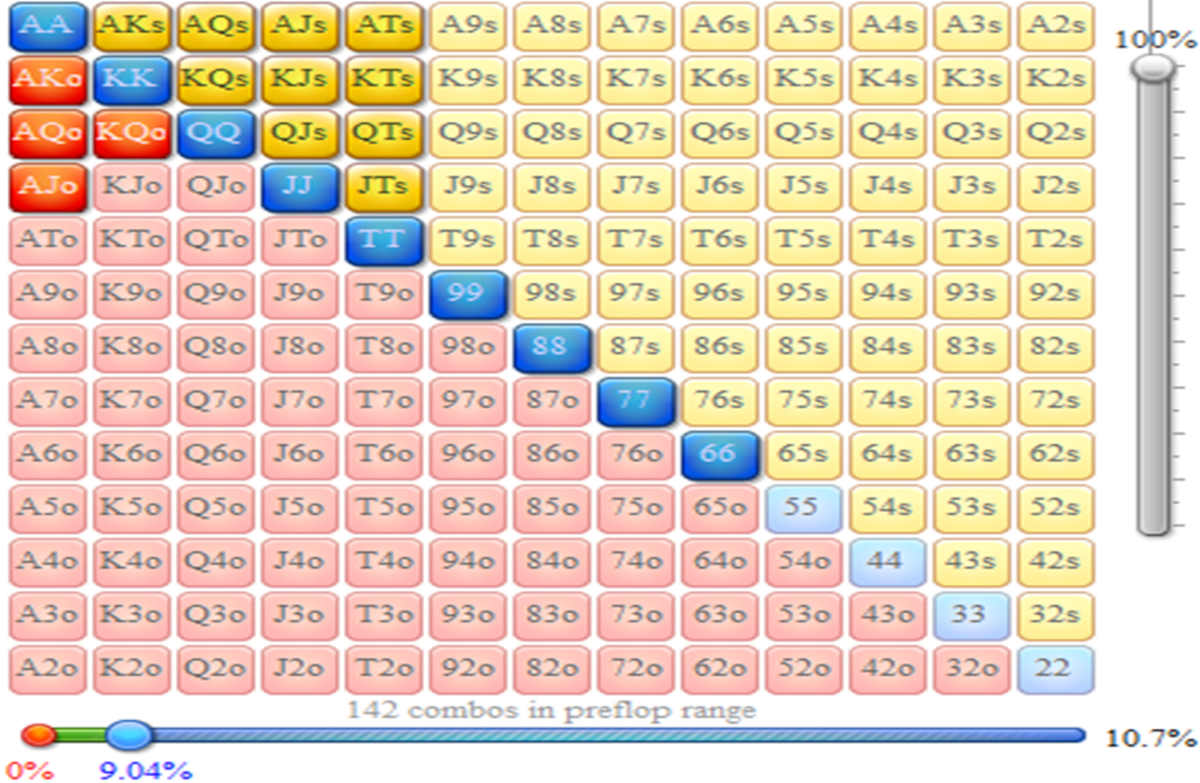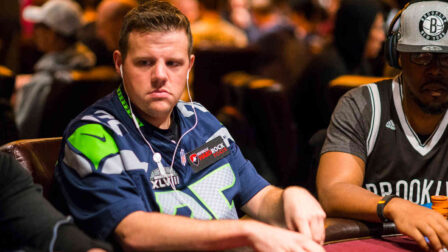3-Bet Poker Strategy: How to Choose Hands for 3-Betting vs. Different Opponents

6 minutes
Last Updated: June 23, 2023
There is no way to understate this: Aggressive 3-betting strategies have dramatically changed poker, and there is no turning back.
During the poker boom years, the only poker hands that were typically 3-bet by the average player were premium hands like queens or better and ace-king.
In 2023, it’s almost impossible to make serious money playing poker without an in-depth, balanced 3-betting strategy.
Avoid Pure Memorization
Since there is a game theory optimal chart for just about every preflop scenario, many players put their heads down and resort to memorization.
They 3-bet certain hands based on the opening position, their own position, and stack sizes, and try to randomize their strategy for certain hands that can play a mixed frequency of 3-betting and calling.
Doing this establishes a theoretical baseline, but ultimately, memorizing charts is not enough. Poker players need to know how to think critically about the situation at hand to make the best play, not merely the book play.
Very often, once your hand is a candidate for 3-betting, the key variable that shapes your decision is who you want to play the hand against. Let’s explore two different scenarios:
Against a Tight Professional Player or Solid Regular
Say you are on the button holding a pretty good but not great hand. It could be ATs, 66, or QJs: You get the idea.
A tight, winning player raises from the hijack at 100 big blinds deep. He is an active 4-bettor when faced with a 3-bet, and he makes very few postflop mistakes.
You think back to your preflop study and remember that your hand 3-bets at some frequency on the button against a hijack opener, but it also calls at some frequency.

The charts do not tell you how to decide, so you consider a randomizer like the second hand on your watch, or the suit of your cards.
But then you look to the big blind, and you see the worst player at the table, who is prone to making big postflop errors.
You decide to side-step the potential 4-bet from the good player and allow the weaker player into the pot by just calling on the button.
Finding a Balance
This is not to say that you should never 3-bet a good player on the button. When you hold a true premium for this configuration like JJ+ or AK, you will still 3-bet.
You’ll also want to balance your value range with bluffs that have good blockers and board coverage, like A5-A4s and suited connectors.
These hands, paradoxically, can become better 3-bet candidates against good players that actually respect 3-bets and fold preflop some of the time.
Notice that polarized does not mean bluffing complete trash: You are still using speculative hands that have good postflop potential. But the point is that it makes more sense to play a polarized range consisting of premium hands and speculative bluffs in this spot.

The profitability of the medium strength hands in your range will likely come more from the postflop errors made by the weak player in the blinds, not from getting into a preflop war with a good player who might punish this part of your range with a 4-bet.
Of course, apart from this example, you will still need to consider the position that the raise came from, the likely range you are up against, and your own position.
These will determine the hands that can be used for value which also shapes how big your bluff range can be.
But with hands that are played at a mixed frequency of calls and 3-bets according to the charts, often the key determination is who you ultimately would like to play the hand against.
Let’s now look at the opposite scenario:
Against the Worst Player at the Table
Assume that everything is the same in this example as before except for one change: The winning player and the worst player at the table switch places. Now it is the bad player opening from the hijack and the strong player in the big blind.
You look down at ATs, 66, or QJs on the button. It’s time to 3-bet. You do not want to flat call the raise and give the good player an excellent price to join the hand.
This is the perfect time to create a heads-up pot and play in position against a player you have an advantage against.
Typically, the worst player at the table will not respect 3-bets very much, even from out of position. This player is usually playing too many hands and responds to 3-bets by calling with too much of his already bloated hand range.
Now it’s time for a strategic adjustment as a polarized 3-betting range no longer makes sense. Rather than 3-betting a mix of premium hands and bluffs, it will make more sense to 3-bet a linear range in this spot consisting of roughly the top 10% of hands.
Because it’s so likely that your 3-bet will be called, you need a hand with good equity and decent playability postflop. Your linear range as the button 3-bettor in this spot may look something like this:

The winning player in the blinds may even recognize that you are isolating against the weaker player, but it’s challenging for him to do much about it.
He can cold 4-bet from the blinds, but he can’t get out of line too much given that he’s out of position against two uncapped ranges, and he can’t exactly count on folds from the bad player which restricts his options.
Is this strategy exactly game theory optimal? Does it matter? Ultimately, it’s more important to recognize the key details in the situation at play to choose the line that makes the most money.
And, as mentioned previously, game theory optimal charts do allow for quite a bit of discretion with many hands.
The charts don’t know where the strong opponents and the weak opponents are seated at your table, but you do. Make sure you’re the one consciously making the final decision rather than defaulting to chart memorization autopilot.
Make Sure Your 3-bet Range Can Defend Itself Against 4-bets
One of the easiest mistakes to make when implementing a new 3-betting strategy is to not account for 4-bets.
A player that begins 3-betting too wide opens himself up to 4-bets from his opponents, which can be costly. For this reason, a good rule of thumb is to make sure at least 40-50% of your 3-betting range can defend itself against opponents with solid 4-betting strategies.
It’s just too expensive to consistently be putting 9-12 big blinds in the pot with marginal hands, only to get 4-bet and not even see a flop.
With that said, there are some opponents that never 4-bet anything other than a premium holding, in which case you can 3-bet more liberally (because the 4-bet will be so infrequent).
Think Critically About the Key Preflop Variables Before 3-betting
The next time you are looking at a preflop chart which is touted as GTO gospel, remember that it is just a baseline.
The challenge is to keep the basic framework in mind while considering your opponent’s opening range, your own position, the stack sizes, and the types of players involved in the hand.
The more you can think critically about the full situation rather than memorizing a predetermined strategy, the richer the game of poker will be for you, both financially and intellectually.




















